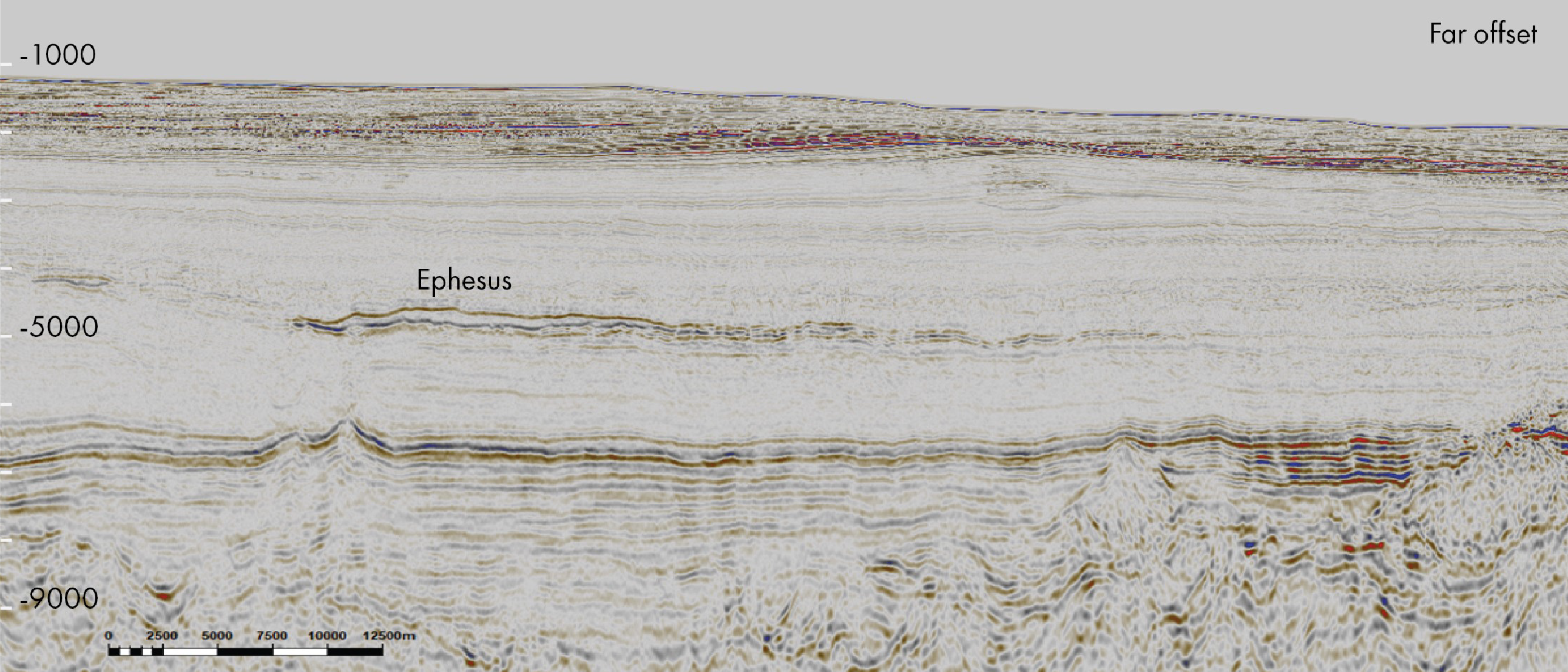The Ephesus prospect – or Cape Freels as it is called by OILCO – lies in the western part of the Orphan Basin. This basin finds its origin in the Middle Jurassic to mid-Cretaceous rifting event that is associated with the first stage of Atlantic continental spreading. The oldest rocks in the basin are therefore thought to be of Middle Jurassic age, overlying metamorphic Paleozoic rocks. Sedimentation continued more or less uninterruptedly until present-day, apart from a Maastrtichtian-Danian phase of erosion.

The main reason why the western part of the Orphan Bain appeared on the exploration radar was the identification of satellite slick anomalies in 2010. This prompted the acquisition of 2D seismic lines in 2012. Interpretation of these lines then suggested the presence of a Paleocene-Eocene play, which subsequently triggered the acquisition of a long-offset 3D survey in 2015. The long-offset nature of the seismic proved of key importance, because it is only in the far offset lines that the prospect is properly imaged.
The Ephesus prospect lies in the Cenozoic post-rift sedimentary interval that drapes the syn-rift Jurassic to Lower Cretaceous stratigraphy. The reservoir likely consists of Eocene submarine fans, shed off the continent into the Orphan Basin.

A typical frontier well
According to a geologist who worked in the area extensively, there are good indications for fluid migration below the prospect, as the escape features illustrate on the seismic line. However, the nature of these fluids is less well-known, and there could be a chance that Ephesus contains gas rather than the more desirable oil. Another factor that was described by the geologist as fairly risky is the source rock. The area relies on a Cretaceous source rock that has not been encountered in many wells and is therefore poorly known. Only a few old well reports made a mention of a possible source rock and the data presented were not particularly consistent. On that basis, Ephesus can surely be categorised as a frontier exploration well, with a huge upside but equally with quite some risks associated with it too.


